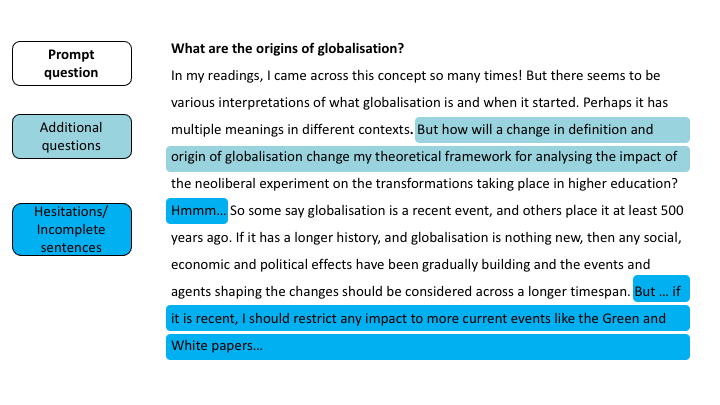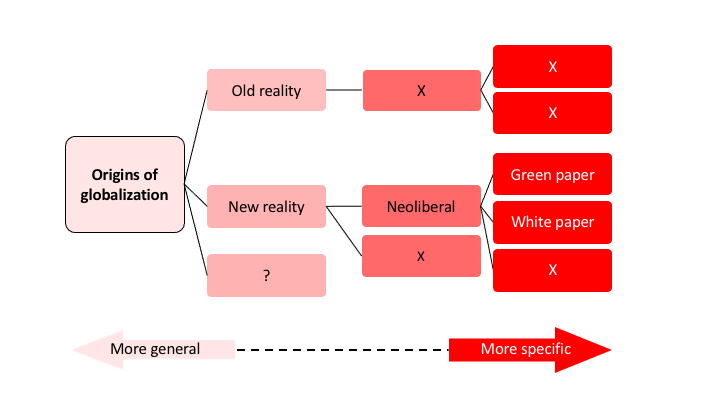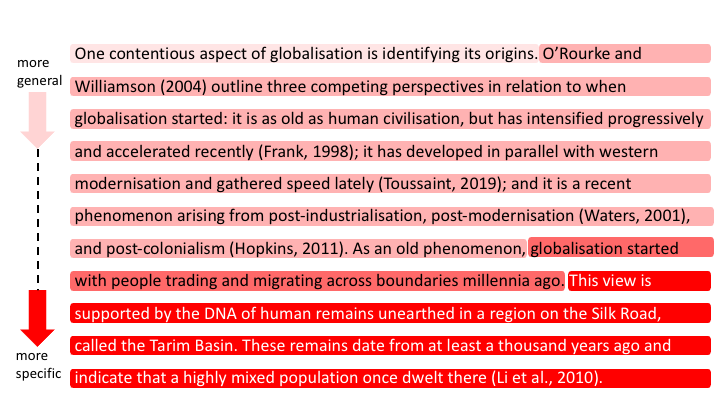Getting words on the page can be hard. One way of getting started is ‘free writing’.
It involves:
- Using a question prompt
- Writing continuously and quickly
- Not editing your own writing yet (incomplete sentences & mistakes are ok)
Video (2:34)
An example of free writing and reorganising it to create academic writing
Example of free writing

Step from free writing to academic writing
While free writing gets words on the page, it then needs to be crafted into academic writing. Some important steps include:
- Highlighting emerging concepts
- Re-organising concepts from more general to more specific
- Identifying areas for further reading
- Refining, adding & deleting concepts
Hightlighting emerging concepts
With words on the page, you can identify concepts that are in your free writing and thinking.

Re-organising concepts & identifying areas for further reading
These concepts can now be reorganised in a ‘map’ to show relationships between them, such as concepts that are more general and those that are more specific.

This kind of visual mapping also helps to identify areas for further reading, i.e. what you want to know more about for your research.
Example of refining, adding & deleting concepts
As you read more, you can adjust your map by refining concepts, deleting, adding, and/or repositioning them – as relevant to your research.

Example of organised academic writing
Maps of concepts can then be used to structure your academic writing. This helps to orientate your reader to the main ideas and guide them towards the more specific details.

Related workshops
Getting started with writing
More videos about academic writing
AUT academic writing YouTube channel
More from AUT's Graduate Research School
Online resources
Recommended literature
Elbow, P. (1986). Writing with power: Essays towards a hopeful theory of writing and teaching writing. Oxford University Press.
Elbow, P. (2000). Everyone can write. Oxford University Press.
Li, L.Y. (2007). Exploring the use of focused freewriting in developing academic writing. Journal of University Teaching & Learning Practice, 4(1), 40-53.
References
From teaching materials (example texts and images)




